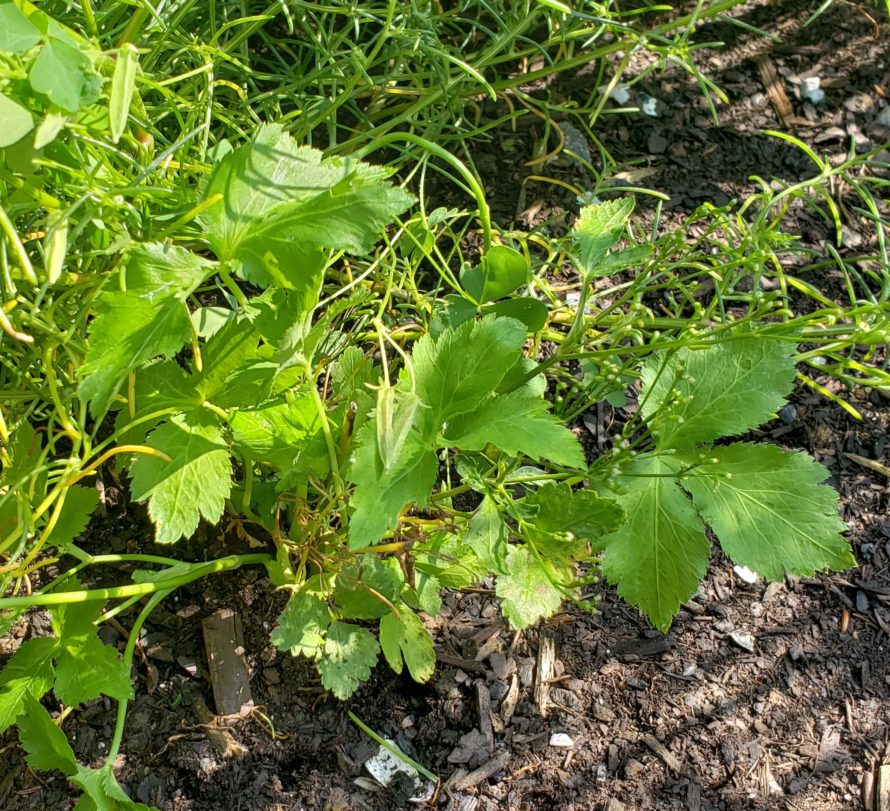
Mitsuba’s characteristic three leaves
Mitsuba (Cryptotaenia japonica) is native to Japan, China and Korea. It’s nickname, Japanese parsley, describes its use perfectly. Japanese cooks use it like we use flat leaf parsley, as a garnish on salads and entrees and also in sushi. The taste is similar to parsley with a hint of celery.
The plants even look like flat leaf Italian parsley but taller and with larger leaves. When grown as a perennial, mitsuba reaches three feet tall. Each stem supports three leaves. The word “mitsuba” means “three leaves” in Japanese.
Here in the US, mitsuba is usually grown as an annual, but in its native Japan, it is a perennial forest plant. Here in the US, it is hardy in zones 5 through 9. The plants prefers partial shade, similar to its forest home, and moist soil. Plants grown in the sun will develop yellow leaves and the taste becomes bitter.
Mitsuba is easily grown from seed. You can start your seeds indoors 4 to 6 weeks before your last frost or you can direct sow them in your garden after all danger of frost. Surface sow the seeds. Do not cover them. They need light to germinate. Germination should occur in 7 to 14 days. You can transplant your seedlings outdoors after all danger of frost has passed. If direct sowing your seeds outdoors, continue to sow the seeds every two weeks until mid-summer. Plant them in rows two to three feet apart. Thin your seedlings to 12 inches apart. Harvest can begin when the seedlings have reached six inches for microgreens or 12 inches for garnish.

